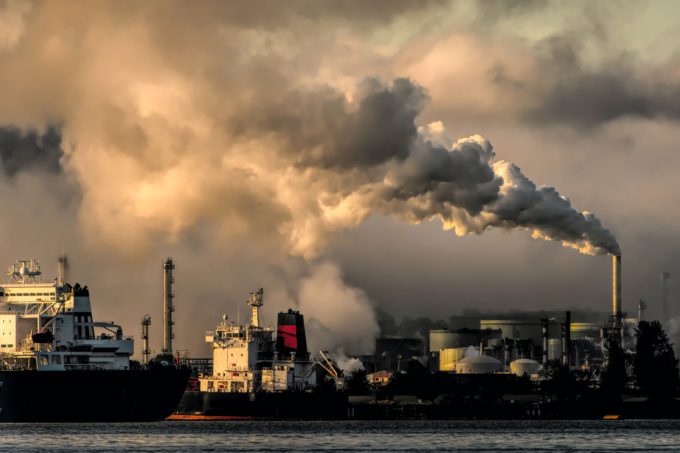
Investing in employee retraining amid the AI revolution
What is ‘quiet hiring? Organizations that invest in reskilling and upskilling can fortify their workforces for the coming seismic changes wrought by technology, globalization, and markets. ...

Published 11 August 2022 in Human Resources • 6 min read
Data over the last century shows a sharp rise in environmental disasters, with a tenfold increase in ecological disasters since the 1960s. Rising sea levels, droughts and other climate change-related events displace some 20 million people annually. Data reveals human activity is a significant cause. For example, a study of the most recent marine heatwave, which lasted from 2019 to 2021 and produced water temperatures up to six degrees celsius above average, found the probability of such a heatwave arising without human influences was less than one per cent.
Experts warn environmental disasters will become more frequent and damaging. Increases in climate-related disasters impose high costs on society and businesses. For example, a recent report by Deloitte shows unchecked climate change may cost the global economy US$178 trillion (A$255 trillion) over the next 50 years.
While businesses are increasingly taking steps to assess the risks and prepare for climate change, many still face internal and external challenges that hinder efforts to move toward greater sustainability and climate resilience. With environmental disasters expected to be more frequent, how should Australian businesses cope with the fallout? What can workplaces and their HR teams do to help manage the impact of natural disasters on workers?
Karin Sanders, Professor in the School of Management and Governance at UNSW Business School, says the increasing frequency and severity of environmental disasters mean businesses need to implement more sustainable HR management practices focused on improving the wellbeing of workers. She examines this topic in a recent paper, Strategic human resource management in the era of environmental disruptions. In the study, Professor Sanders and her co-authors refer to “environmental disruptions” more broadly as unexpected events with extreme impacts on society and businesses. The authors use the COVID-19 pandemic as a recent example due to its profound unforeseen effects on existing arrangements within and across organizations.

But the global pandemic aside, Sanders says climate-related disruptions have the most significant potential to cause harm and thus pose the biggest threat to businesses and their workers. So what is an environmental disaster? The study highlights three main types of environmental disruptions:
Sustainable HR practices intend to make employees more aware and motivated to work on the financial (profit), social (social responsibility), and ecological (environmental) goals of an organization, which can be related to the UN Sustainable Development Goals (SDGs), explains Sanders. The study concludes by recommending businesses adopt sustainable HR practices to manage better responses to environmental disasters, particularly climate change-related disasters. So what would this look like in practice?
Sustainable HR practices include training to make employees more aware of the importance of climate change or hiring employees who show an interest in and awareness of social and ecological sustainability. For example, in recognition of its environmental impact, Royal Dutch Shell recently adopted a sustainable HR practice: linking directors’ KPIs (and pay) with the group’s climate performance and severing the link between bonuses and liquefied natural gas production volumes.
Aside from the physical impacts, like the loss of a worker’s home during floods, environmental disasters can also threaten employees’ wellbeing because they deplete emotional resources, explains Sanders. This is a serious challenge for HR management, as affected workers will show low job satisfaction, low job performance, and high turnover intentions. Fortunately, businesses have the means to mitigate this problem, she says. So, while businesses can’t predict disaster events, they can proactively ensure employees feel supported.
Businesses can adopt sustainable HR practices to support workers through environmental disasters- Karin Sanders
“Employees should be able to talk to their supervisor and work out individual flexibility arrangements,” says Sanders. For example, she explains, supporting employees to work from home by ensuring they have all the necessary equipment (additional monitors, providing desks and good chairs, etc.). She says that managers can also lower performance targets to help address stress sources. Managers can clarify that affected workers are welcome to find suitable arrangements; perhaps they don’t have to come into the office or take on that extra project.
At the same time, she says managers should recognize individual differences and not compare employees to each other. Other key factors include transparency over who is given what benefits and flexibility. This can be achieved through a structure where standard employment agreements are shared across the organization, says Sanders. Ultimately, businesses must recognize that HR management has a role in helping employees maintain emotional wellbeing and productivity during disasters, she says.


AGSM Scholar and Professor
Karin Sanders is a Professor in the School of Management and Governance at UNSW Business School. For more information about the adoption and implementation of sustainable HR practices, please get in touch with Prof. Sanders directly.

20 hours ago • by James Caan in Human Resources
What is ‘quiet hiring? Organizations that invest in reskilling and upskilling can fortify their workforces for the coming seismic changes wrought by technology, globalization, and markets. ...

29 February 2024 • by Zhike Lei, Patrick Reinmoeller in Human Resources
For research-based, actionable advice on team talent management, look to these professors’ complementary insights. ...

21 February 2024 • by Knut Haanaes in Human Resources
Knut Haanaes, Professor of Strategy and Lundin Sustainability Chair at IMD Business School, explains why CHROs will play a key role in their organizations’ progress towards net zero. ...

9 February 2024 • by Jo Yarker in Human Resources
Leaders in organizations face unprecedented expectations when caring for the mental well-being of their teams. Building sustainable solutions involves an all-hands-on-deck effort throughout the organization which can pay dividends in productivity and...
Explore first person business intelligence from top minds curated for a global executive audience